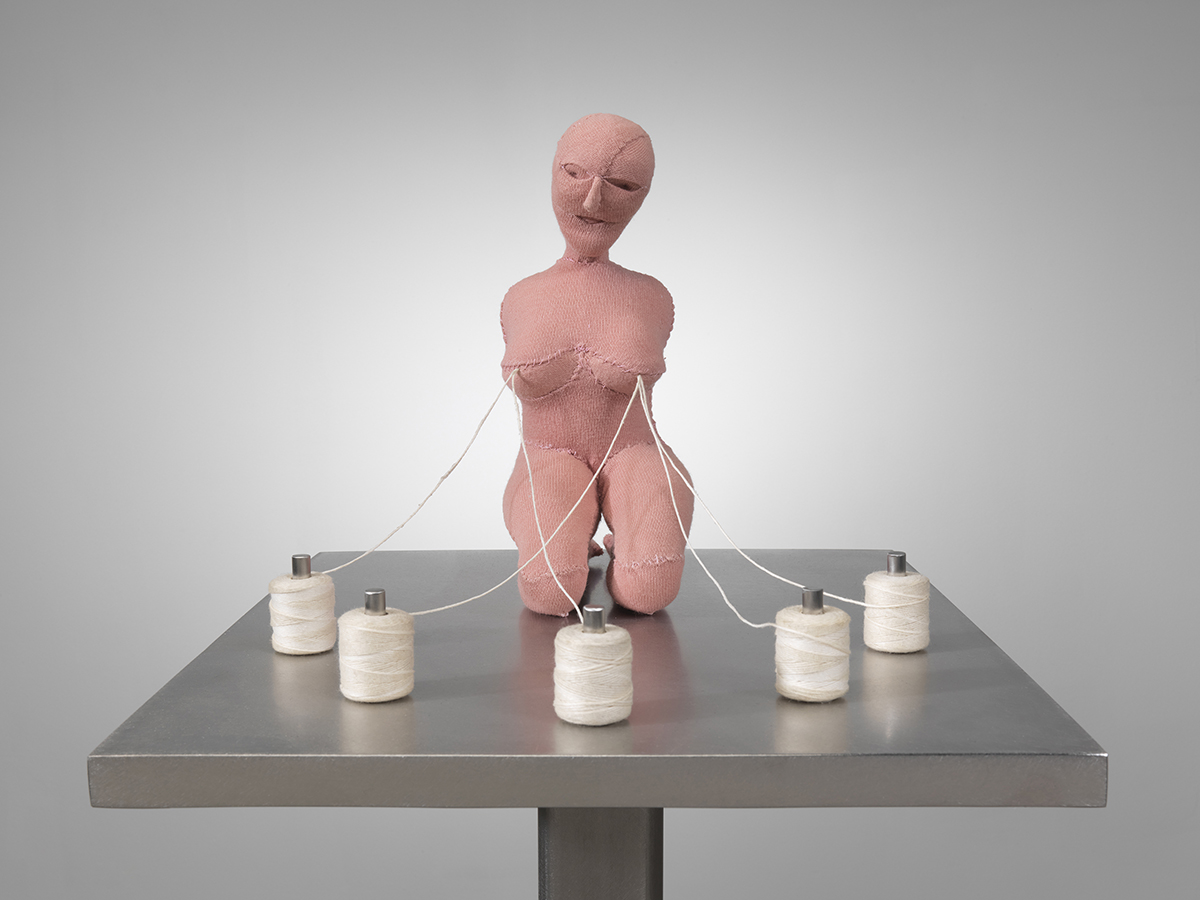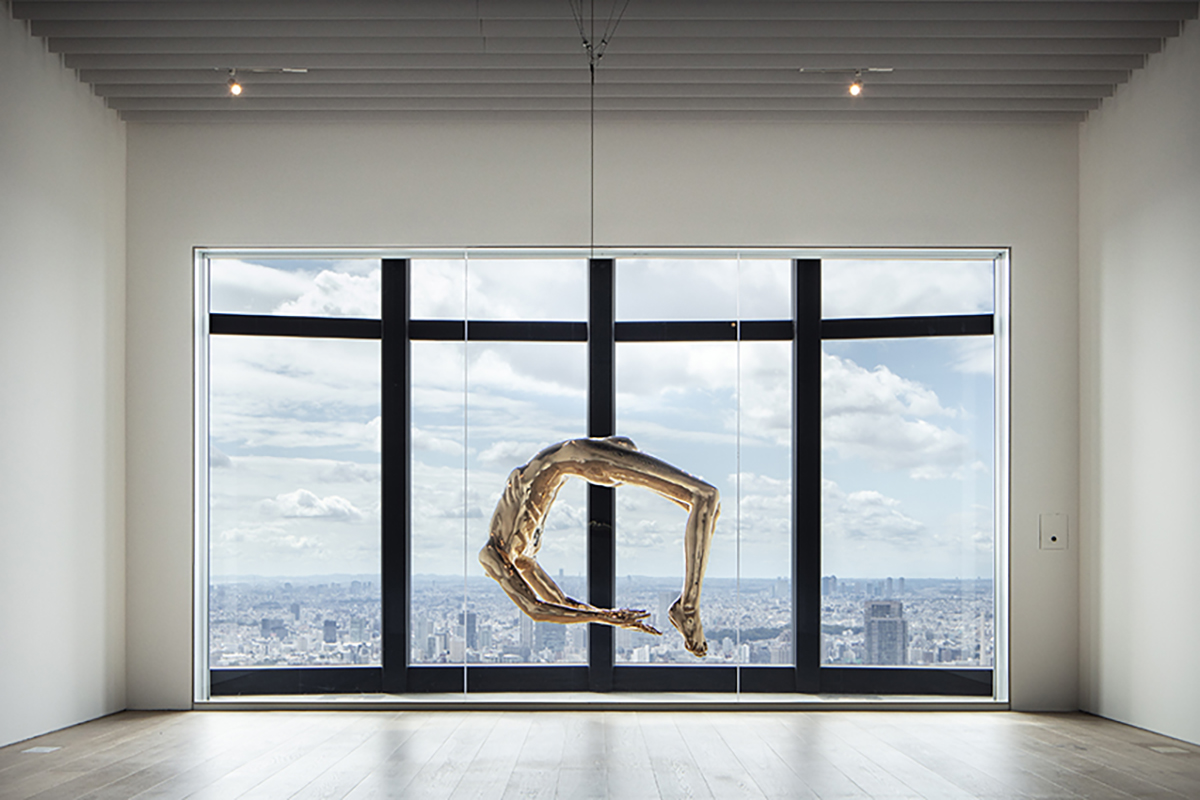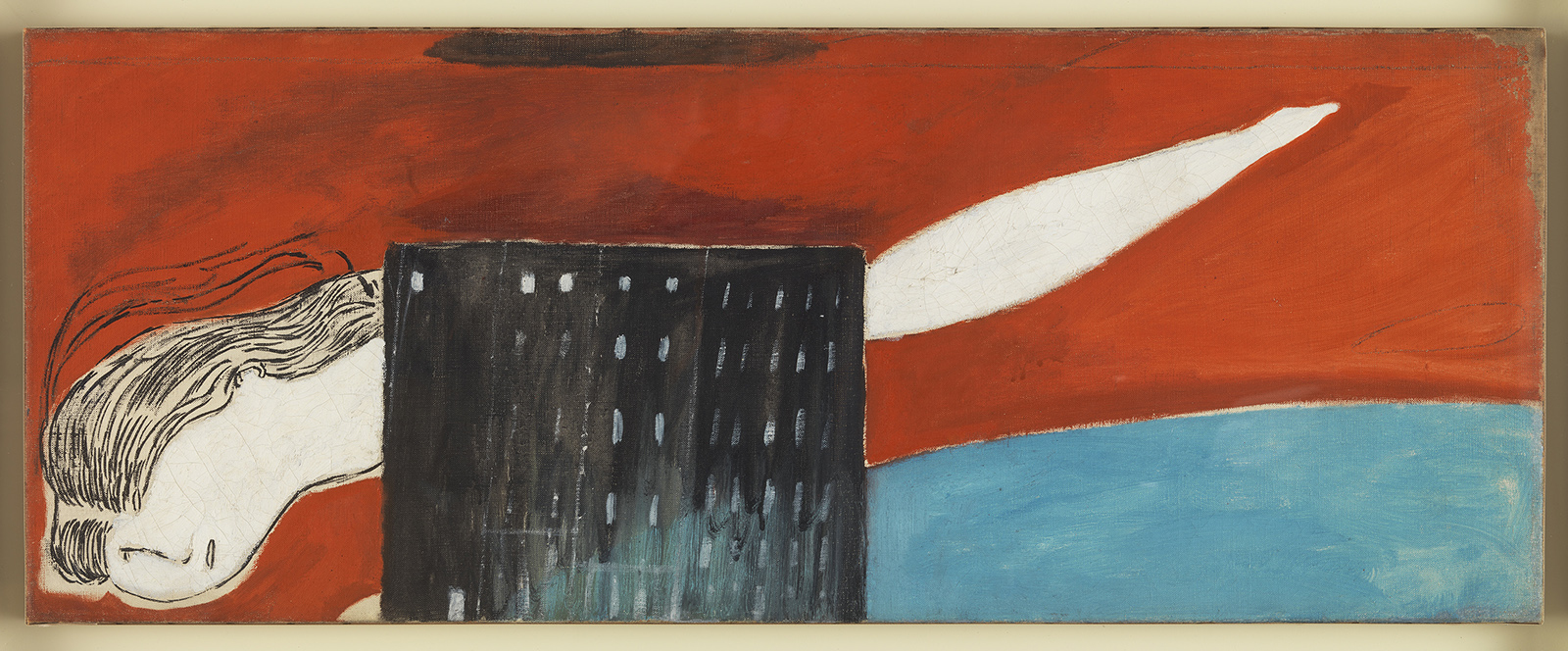LOUISE BOURGEOIS: I HAVE BEEN TO HELL AND BACK. AND LET ME TELL YOU, IT WAS WONDERFUL
HAPPENINGText: Alma Reyes
As a mother herself, Bourgeois’ maternal perspective encompassed multifaceted roles — whether as a doting mother or a neglectful one. A striking self-portrait, The Runaway Girl (circa 1938), presents the unwavering artist carrying a suitcase, and leaving her house (in the distant background) in France, epitomized by the blue ocean. A large platform installation of varied sculptures focuses on bodily fragmentation caused by psychic disintegration, and are highlighted by light projection of Bourgeois’ own words on the walls, conceptualized by artist Jenny Holzer.

Louise Bourgeois, Nature Study, 1984, Photo: Christopher Burke © The Easton Foundation/Licensed by JASPAR and VAGA at Artists Rights Society (ARS), NY
Bourgeois believed her sculptures represented her own body. The figures commonly depict instability, psychological erosion, and devotion at the same time. For instance, the self-portrait Nature Study (1984), a headless sphinx with fierce claws and multiple breasts, ready to attack aggressors, embodied her instincts of maternal protection. The combination of male and female or ambisexual genitalia exposed her message of vulnerability. As a contrast, The Good Mother (detail) (2003) portrays an armless pink mother, sewn by threads to five spools (symbolizing her family of three children), and exudes an intimate flow of tenderness and delicacy.

Louise Bourgeois, The Good Mother (detail), 2003, Photo: Christopher Burke © The Easton Foundation/Licensed by JASPAR and VAGA at Artists Rights Society (ARS), NY
Two prominent suspended sculptures are worth speculating. The Couple (2003) in aluminum shows the partners in loving embrace rotating from the ceiling as one. Bourgeois states, “The spiral is an attempt at controlling the chaos.” In the room that opens to Tokyo’s panoramic view, Arch of Hysteria (1993) dramatically illuminates a bronze headless male figure arched backwards like a circle. Despite ancient stereotypes of female hysteria, Bourgeois wished to demonstrate that males, too, possess the disease.

Installation view, Louise Bourgeois, Arch of Hysteria, 1993. Collection: The Easton Foundation, New York © The Easton Foundation/Licensed by JASPAR and VAGA at Artists Rights Society (ARS), NY, Louise Bourgeois: I have been to hell and back. and let me tell you, it was wonderful, Mori Art Museum, Tokyo, 2024
Paintings mirror Bourgeois’ family life in France, nature, houses, self-portraits, and early years in New York. Ten pieces are displayed in Asia for the first time. Works like Femme Maison (1946-1947) question female identity wherein the woman’s head and body had been replaced by a house or building to indicate refuge and safety. The Femme Maison series impacted the feminist movement of the 60s and 70s.
Read more ...







